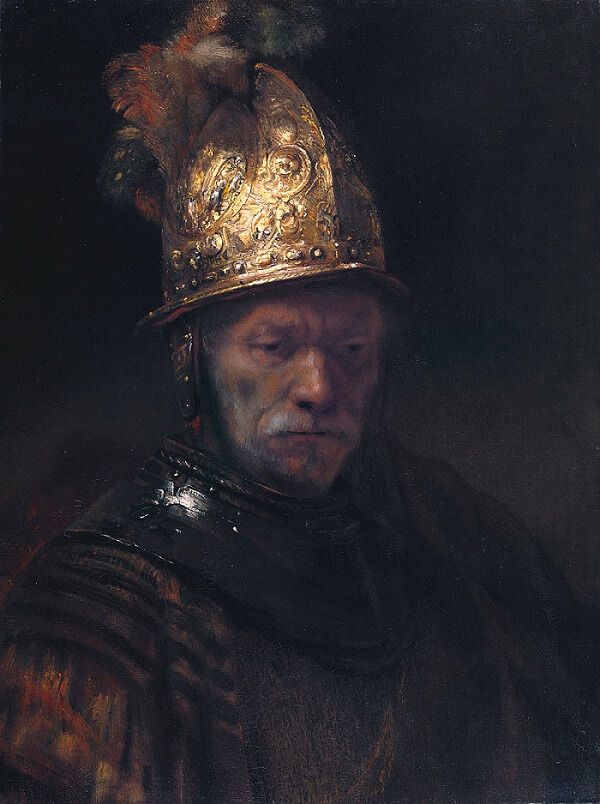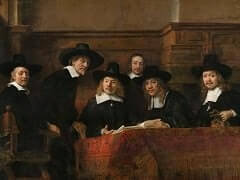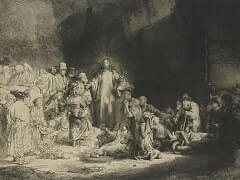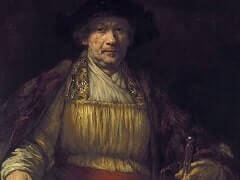The Man with the Golden Helmet, 1650 by Rembrandt

Like so many of Rembrandt's greatest works the Man in the Golden Helmet has been on too many calendars, tablemats and postage stamps to be generally taken as the gravely serious work that it is. It can either be interpreted as a tired but dignified old man dressed in a golden helmet, in order to give the artist an excuse to paint the object rather like a still-life; or more likely it is of a specific king who has not yet been identified, in the same way that the Glasgow A Man in Armour can be shown to represent Alexander the Great with a reasonable degree of certainty. It has also been suggested that the sitter in the Berlin picture is Rembrandt's brother, and although the same old man appears in other pictures there is no real evidence either way.
The man here has a slight frown, and his tired and seemingly unwashed face is a sharp contrast to the glitter of the golden helmet. One is tempted to ask if this is not a kind of moral picture where the gold of the world is contrasted with the fragility of man. Croesus himself comes to mind, although he is more usually shown with the philosopher Solon who brings to his notice that happiness cannot be found in great wealth. Rembrandt has used every technical device to achieve the contrast between the untarnishable gold and the tragedy of the once strong and healthy man underneath it. There is never any mockery, but only an ineffable sadness which justifies the enormous fame of this picture. Its date is unknown, but it is generally thought to have been painted about 1650.




















